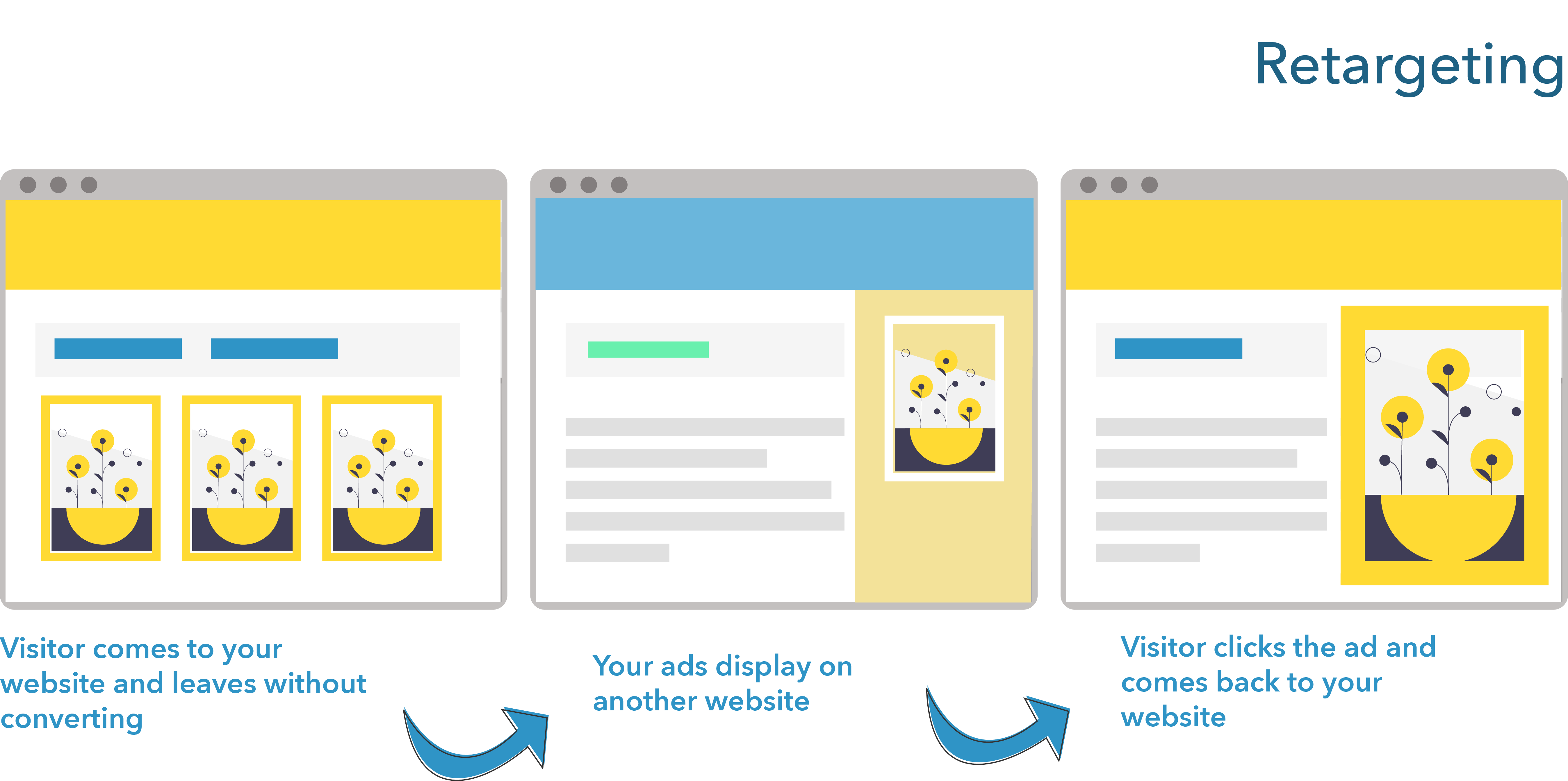Remarketing and Retargeting
Remarketing (sometimes called list-based retargeting) and retargeting (also called pixel or behavioral retargeting) are forms of targeting that serve ads to specific consumers, albeit differently. Online, you might find varying terms for these two activities. For example, Google places both under their remarketing tools.
Both strategies help during lead nurturing to maximize opportunities for conversion by serving ads to the right lead at the right stage of their journey. Remarketing and retargeting typically target qualified leads (MQL or SQL).
Although we discuss these two practices at the conversion stage, they can be used to convert for any goal (e.g., having consumers sign up for a webinar or visit a blog post, as well as making a purchase). In short, these approaches can be used to generate leads, qualify leads, or convert to purchase.
The main difference between the two approaches is how targeting is put into action. Remarketing uses emails collected during lead generation activities to target leads, while retargeting targets consumers based on previous behaviors. In both cases, ads are displayed to consumers.
To practice remarketing, a firm first needs to create an email list. Then, using targeting options on advertising platforms such as Facebook Custom Audience or Google Customer Match, a firm can create an ad campaign that will be seen only by consumers with these email addresses.
While remarketing can be useful for many strategic purposes, it is often used during retention strategies (i.e., when customers have already been acquired). This is, however, not the only use of remarketing. Remarketing can be used as part of a greater lead nurturing campaign to engage leads at any stage of their journey. For example, as long as a firm is properly keeping track of the stage at which the lead is located, it can use the emails associated with a large number of leads at a specific stage to personalize an ad campaign.
An advantage of remarketing is that it is highly customizable to specific customers, since you are targeting based on their email addresses. Two downsides, though, are that mismatch of email addresses happens (e.g., a lead might have given you an email address they do not use for their Facebook or Google accounts) and that it is not automatic (as compared to retargeting).
Instead of targeting ads based on an email list, retargeting uses previous behaviors, such as clicking a link, putting a product in a cart, or liking or commenting on a post. This is why, sometimes, after putting an item in a cart and abandoning your purchase, you might see the same article in the ads shown to you in numerous websites, over and over again (Figure 8.21).
Figure 8.21 Retargeting

Because retargeting is automatic, and because it works on any predefined goal that has been accomplished by a visitor or a lead (e.g., viewing a specific page, clicking a link, spending time on a site, or commenting on a Facebook post), it is a great tool to master to perfect lead nurturing campaigns. Although retargeting is often used to push consumers to complete purchases, its uses are much more wide-ranging. Retargeting is a great tool to engage leads to perform the next action in a planned path. For example, a firm could create a blog post or a piece of gated content to generate leads and retarget anybody who gave their email address on either in order for them to accomplish the next goal the path set up for that specific persona.
Retargeting can also be used for lead generation, where a company could target people interested in a specific product category. For example, car companies do retargeting campaigns by advertising product reviews of their cars and those of their competitors on social media and by retargeting anybody who clicks on the ads to read the reviews. Such campaigns help generate leads by identifying consumers who seem to be looking to make a purchase in a specific product category and then targeting them to engage in lead generation activities.
Because it is highly customizable and automatic, the options when using retargeting are almost limitless. A firm simply needs to identify behavior that they deem interesting for scoring leads or identifying their stage in the journey and use retargeting to serve ads to the specific consumers who will have performed that behavior. Retargeting campaigns work best when firms have a clear idea of the path their persona should take to make a purchase, because the campaigns can then be used to maximize the chances that a persona at a specific step in that path will continue on and perform the next step.
Lastly, it is important, though, to ensure you identify the right actions! To finish this chapter on some laughs (or at least a smile):
Figure 8.22 Retargeting Example

